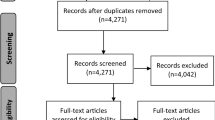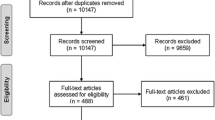Abstract
Stage II transport (St2Tr) is propulsion of triturated food into the pharynx for storage before swallowing via tongue squeeze-back against the palate. To clarify the phenomenology of St2Tr, we examined the effects of food consistency and the number of chewing cycles on the number of St2Tr cycles in a chew-swallow sequence. We recorded chew-swallow sequences in lateral projection with videofluoroscopy of 13 healthy volunteers eating 6 g of hard (shortbread cookie), and soft foods (ripe banana and tofu) with barium. We counted the number of chewing and St2Tr cycles from food intake to terminal swallow. We used the Friedman test for bivariate analyses and negative binomial regression for multivariable analyses. On bivariate analysis, food consistency had a positive association with the number of chewing cycles (P = 0.013), but not with the number of St2Tr cycles (P = 0.27). Multivariable analysis, however, revealed a greater number of St2Tr cycles with hard than soft food (P ≤ 0.01) and a trend toward negative correlation between the numbers of St2Tr and chewing cycles (P = 0.083). The number of chewing cycles needed to clear the mouth differs among food consistencies as demonstrated previously. Greater numbers of both St2Tr and chewing cycles were elicited with the hard than with the soft foods. Given the trend toward negative correlation, the association between the number of St2Tr cycles and that of chewing cycles deserves further study.





Similar content being viewed by others
References
Leopold NA, Kagel MC. Swallowing, ingestion and dysphagia: a reappraisal. Arch Phys Med Rehabil. 1983;64(8):371–3.
Palmer JB, Rudin NJ, Lara G, Crompton AW. Coordination of mastication and swallowing. Dysphagia. 1992;7(4):187–200.
Palmer JB. Bolus aggregation in the oropharynx does not depend on gravity. Arch Phys Med Rehabil. 1998;79(6):691–6.
Hiiemae KM, Palmer JB. Food transport and bolus formation during complete feeding sequences on foods of different initial consistency. Dysphagia. 1999;14(1):31–42 Winter.
Hiiemae KM, Palmer JB. Tongue movements in feeding and speech. Crit Rev Oral Biol Med. 2003;14(6):413–29.
Palmer JB, Hiiemae KM, Matsuo K, Haishima H. Volitional control of food transport and bolus formation during feeding. Physiol Behav. 2007;91(1):66–70.
Thexton AJ, McGarrick JD. The electromyographic activities of jaw and hyoid musculature in different ingestive behaviours in the cat. Arch Oral Biol. 1994;39(7):599–612.
van der Bilt A, Pocztaruk RL, Frasca LC, van der Glas HW, Abbink JH. The influence of auditory and visual information on the neuromuscular control of chewing crispy food. Eur J Oral Sci. 2011;119(6):427–34.
Engelen L, Fontijn-Tekamp A, van der Bilt A. The influence of product and oral characteristics on swallowing. Arch Oral Biol. 2005;50(8):739–46.
Hiiemae K, Heath MR, Heath G, Kazazoglu E, Murray J, Sapper D, Hamblett K. Natural bites, food consistency and feeding behaviour in man. Arch Oral Biol. 1996;41(2):175–89.
Fontijn-Tekamp FA, van der Bilt A, Abbink JH, Bosman F. Swallowing threshold and masticatory performance in dentate adults. Physiol Behav. 2004;83(3):431–6.
Anderson K, Throckmorton GS, Buschang PH, Hayasaki H. The effects of bolus hardness on masticatory kinematics. J Oral Rehabil. 2002;29(7):689–96.
Steele CM, Van Lieshout PH. Influence of bolus consistency on lingual behaviors in sequential swallowing. Dysphagia. 2004;19(3):192–206 Summer.
Wintergerst AM, Throckmorton GS, Buschang PH. Effects of bolus size and hardness on within-subject variability of chewing cycle kinematics. Arch Oral Biol. 2008;53(4):369–75.
Taniguchi H, Tsukada T, Ootaki S, Yamada Y, Inoue M. Correspondence between food consistency and suprahyoid muscle activity, tongue pressure, and bolus transit times during the oropharyngeal phase of swallowing. J Appl Physiol. 2008;105(3):791–9.
Saitoh E, Shibata S, Matsuo K, Baba M, Fujii W, Palmer JB. Chewing and food consistency: effects on bolus transport and swallow initiation. Dysphagia. 2007;22(2):100–7.
Peyron MA, Gierczynski I, Hartmann C, Loret C, Dardevet D, Martin N, Woda A. Role of physical bolus properties as sensory inputs in the trigger of swallowing. PLoS One. 2011;6(6):e21167.
de Wijk RA, Janssen AM, Prinz JF. Oral movements and the perception of semi-solid foods. Physiol Behav. 2011;104(3):423–8.
Foster KD, Grigor JM, Cheong JN, Yoo MJ, Bronlund JE, Morgenstern MP. The role of oral processing in dynamic sensory perception. J Food Sci. 2011;76(2):R49–61.
Matsuo K, Hiiemae KM, Gonzalez-Fernandez M, Palmer JB. Respiration during feeding on solid food: alterations in breathing during mastication, pharyngeal bolus aggregation, and swallowing. J Appl Physiol. 2008;104(3):674–81.
Taniguchi H, Matsuo K, Okazaki H, Yoda M, Inokuchi H, Gonzalez-Fernandez M, Inoue M, Palmer JB. Fluoroscopic evaluation of tongue and jaw movements during mastication in healthy humans. Dysphagia. 2013;28(3):419–27.
Kim DH, Choi KH, Kim HM, Koo JH, Kim BR, Kim TW, Ryu JS, Im S, Choi IS, Pyun SB, Park JW, Kang JY, Yang HS. Inter-rater reliability of videofluoroscopic dysphagia scale. Ann Rehabil Med. 2012;36(6):791–6.
Holman SD, Campbell-Malone R, Ding P, Gierbolini-Norat EM, Griffioen AM, Inokuchi H, Lukasik SL, German RZ. Development, reliability, and validation of an infant mammalian penetration-aspiration scale. Dysphagia. 2013;28(2):178–87.
Acknowledgments
The late Dr. Karen Hiiemae immensely contributed this work. We would like to thank Chune Yang for her extraordinary support and assistance. We appreciate the comments on the manuscript offered by Drs. Rebecca Z. German and Ianessa Humbert.
Conflict of interest
This research was supported in part by NIH/NIDCD award No. R01-DC02123. We presented this study at the 20th Annual Meeting of Dysphagia Research Society, Toronto, Canada, March 7–10, 2012. All authors have no financial conflict of interests to disclose concerning the research.
Author information
Authors and Affiliations
Corresponding author
Rights and permissions
About this article
Cite this article
Inokuchi, H., Brodsky, M.B., González-Fernández, M. et al. Frequency of Stage II Oral Transport Cycles in Healthy Human. Dysphagia 29, 685–691 (2014). https://doi.org/10.1007/s00455-014-9562-5
Received:
Accepted:
Published:
Issue Date:
DOI: https://doi.org/10.1007/s00455-014-9562-5




